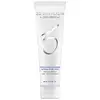What's inside
What's inside
 Key Ingredients
Key Ingredients

 Benefits
Benefits

 Concerns
Concerns

 Ingredients Side-by-side
Ingredients Side-by-side

Water
Skin ConditioningSodium Laureth Sulfate
CleansingAcrylates Copolymer
Jojoba Esters
EmollientGlycerin
HumectantCocamidopropyl Betaine
CleansingMannitol
HumectantCellulose
AbsorbentSpiraea Ulmaria Extract
AstringentDisodium Cocoamphodiacetate
CleansingCocamidopropyl Hydroxysultaine
CleansingTocopheryl Acetate
AntioxidantNiacin
SmoothingNiacinamide
SmoothingCaprylyl Glycol
EmollientLaureth-2
CleansingHexylene Glycol
EmulsifyingSodium Sulfate
Disodium EDTA
Ammonium Lactate
BufferingSalicylic Acid
MaskingHydroxypropyl Methylcellulose
Emulsion StabilisingSodium PCA
HumectantBiosaccharide Gum-1
HumectantButylene Glycol
HumectantSodium Chloride
MaskingSodium Hydroxide
BufferingPhenoxyethanol
PreservativeEthylhexylglycerin
Skin ConditioningBenzoic Acid
MaskingParfum
MaskingCI 77289
Cosmetic ColorantCitronellol
PerfumingHexyl Cinnamal
PerfumingLimonene
PerfumingLinalool
PerfumingWater, Sodium Laureth Sulfate, Acrylates Copolymer, Jojoba Esters, Glycerin, Cocamidopropyl Betaine, Mannitol, Cellulose, Spiraea Ulmaria Extract, Disodium Cocoamphodiacetate, Cocamidopropyl Hydroxysultaine, Tocopheryl Acetate, Niacin, Niacinamide, Caprylyl Glycol, Laureth-2, Hexylene Glycol, Sodium Sulfate, Disodium EDTA, Ammonium Lactate, Salicylic Acid, Hydroxypropyl Methylcellulose, Sodium PCA, Biosaccharide Gum-1, Butylene Glycol, Sodium Chloride, Sodium Hydroxide, Phenoxyethanol, Ethylhexylglycerin, Benzoic Acid, Parfum, CI 77289, Citronellol, Hexyl Cinnamal, Limonene, Linalool
Caprylic/Capric Triglyceride
MaskingGlycerin
HumectantPerlite
AbsorbentWater
Skin ConditioningSucrose Laurate
EmollientXylitol
HumectantGlycolic Acid
BufferingLactoferrin
Skin ConditioningDunaliella Salina Extract
Skin ConditioningTocopherol
AntioxidantSqualane
EmollientPolylysine
Arginine
MaskingSodium Hydroxide
BufferingEthylhexylglycerin
Skin ConditioningPhenoxyethanol
PreservativeSynthetic Fluorphlogopite
CI 77742
Cosmetic ColorantCI 77891
Cosmetic ColorantIngredients Explained
These ingredients are found in both products.
Ingredients higher up in an ingredient list are typically present in a larger amount.
Ethylhexylglycerin (we can't pronounce this either) is commonly used as a preservative and skin softener. It is derived from glyceryl.
You might see Ethylhexylglycerin often paired with other preservatives such as phenoxyethanol. Ethylhexylglycerin has been found to increase the effectiveness of these other preservatives.
Glycerin is already naturally found in your skin. It helps moisturize and protect your skin.
A study from 2016 found glycerin to be more effective as a humectant than AHAs and hyaluronic acid.
As a humectant, it helps the skin stay hydrated by pulling moisture to your skin. The low molecular weight of glycerin allows it to pull moisture into the deeper layers of your skin.
Hydrated skin improves your skin barrier; Your skin barrier helps protect against irritants and bacteria.
Glycerin has also been found to have antimicrobial and antiviral properties. Due to these properties, glycerin is often used in wound and burn treatments.
In cosmetics, glycerin is usually derived from plants such as soybean or palm. However, it can also be sourced from animals, such as tallow or animal fat.
This ingredient is organic, colorless, odorless, and non-toxic.
Glycerin is the name for this ingredient in American English. British English uses Glycerol/Glycerine.
Learn more about GlycerinPhenoxyethanol is a preservative that has germicide, antimicrobial, and aromatic properties. Studies show that phenoxyethanol can prevent microbial growth. By itself, it has a scent that is similar to that of a rose.
It's often used in formulations along with Caprylyl Glycol to preserve the shelf life of products.
Sodium Hydroxide is also known as lye or caustic soda. It is used to adjust the pH of products; many ingredients require a specific pH to be effective.
In small amounts, sodium hydroxide is considered safe to use. However, large amounts may cause chemical burns due to its high alkaline.
Your skin has a natural pH and acid mantle. This acid mantle helps prevent harmful bacteria from breaking through. The acid mantle also helps keep your skin hydrated.
"Alkaline" refers to a high pH level. A low pH level would be considered acidic.
Learn more about Sodium HydroxideWater. It's the most common cosmetic ingredient of all. You'll usually see it at the top of ingredient lists, meaning that it makes up the largest part of the product.
So why is it so popular? Water most often acts as a solvent - this means that it helps dissolve other ingredients into the formulation.
You'll also recognize water as that liquid we all need to stay alive. If you see this, drink a glass of water. Stay hydrated!
Learn more about Water